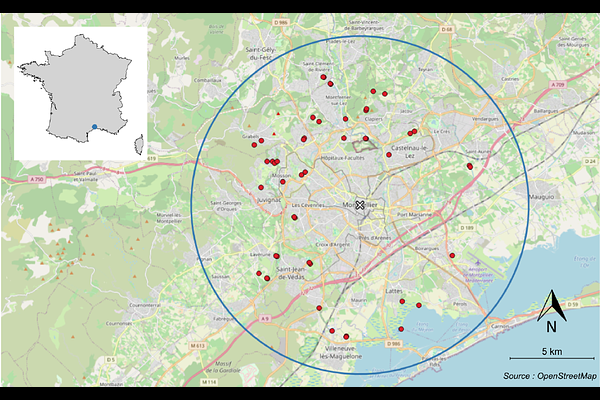Spatial covariation between wild boars and other mammals in peri-urban landscapes: insights for management from southern France

Spatial covariation between wild boars and other mammals in peri-urban landscapes: insights for management from southern France
Barachin, L.; Dezeure, J.; Said, S.; Mathevet, R.; Baubet, E.; Chamaille-Jammes, S.
AbstractGlobal urbanization is rapidly increasing, transforming ecosystems and favoring generalist species that adapt to human-modified environments. The wild boar, a highly adaptable species, is expanding its range and increasingly observed in urban and peri-urban areas, where it can cause accidents, damage, and health concerns. To mitigate their presence, non-lethal control strategies such as vegetation clearing in peri-urban parks and wastelands are being implemented to reduce the number of suitable resting sites. However, the ecological consequences of such habitat modifications on other wildlife species remain poorly understood. This knowledge gap limits the development of effective urban wildlife management strategies that seeks to balance ecological, social and economic considerations without harming wild boar populations and urban ecosystems. In this context, we used camera trapping to study the covariation between wild boars and other mammal species in a peri-urban area, with the aim of guiding targeted and effective management strategies. Here, we show a widespread presence of wild boars but no spatial or temporal covariation between the wild boars and the other species. In contrast, we found strong spatial structuring in mammal communities, primarily driven by small carnivores (mustelids, genets, cats, foxes) and a minimal influence of temporal variation, confirming that spatial factors, rather than seasonal changes, largely shaped species distributions. The study of the temporal variation across months indicated minimal seasonal structuring but revealed substantial within-site variability in month-to-month species abundance, with a general abundance gradient driven by common species like wild boar, cat, and fox. In conclusion, our results show that the lack of spatial covariation between wild boar and other species prevents reliable predictions, supporting a targeted rather than general approach to vegetation management.